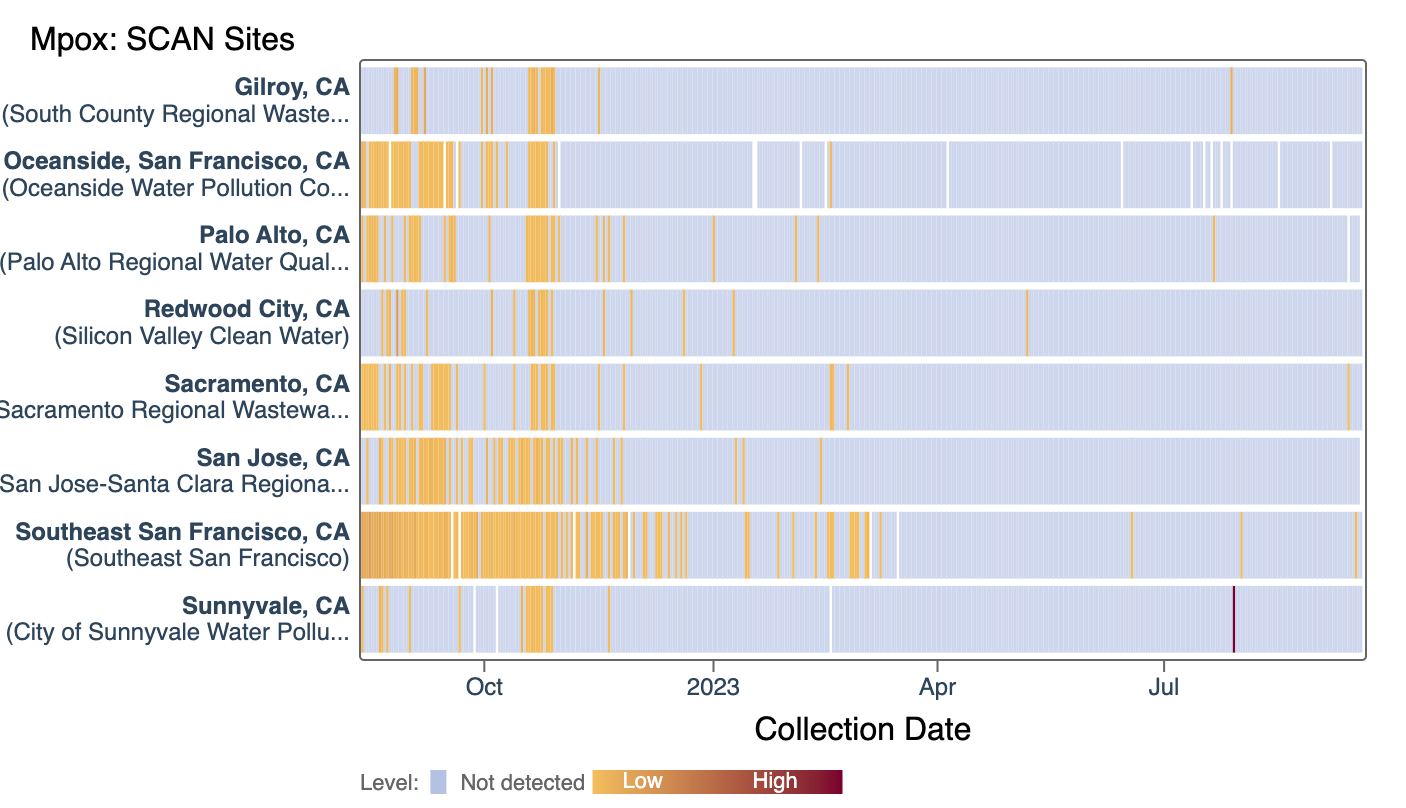SCAN Weekly Update - 9/20/23
This blog post describes data collected at 8 wastewater treatment plants in the Greater Bay Area of San Francisco, CA, including Sacramento, that are partners in the SCAN project which began in late 2020. The SCAN plants are a subset of the WastewaterSCAN plants.

Map of 8 SCAN sites located in the Greater San Francisco Bay Area, CA
All samples picked up by the couriers as of 9/18/23 have been processed and their data are on the site: data.wastewaterscan.org. Please email Amanda Bidwell at albidwel@stanford.edu if you identify any bugs on the site.
Wastewater Categories
Looking at trends, levels, and frequency of detection to categorize what we are seeing in wastewater
We recently implemented a new Wastewater Categorization system to better help communicate what wastewater is telling us about community disease circulation. The wastewater categorization looks at trends (to tell us how things have changed in the last 21 days), levels (to tell us whether cases are relatively lower or higher than what they have been in the past), and frequency of detection (for rarer pathogens). The new Wastewater Categorization system is explained in more detail in this video.
The Wastewater Categories are broken up into 3 Archetypes for WWSCAN Pathogens:
- Pathogens that are commonly detected (regardless of season) - SARS-CoV-2, Norovirus, and ‘peak season’ Respiratory pathogens (IAV, RSV, HMPV)

- Seasonal pathogens (rarely detected outside of season/outbreaks) - IAV, RSV, HMPV
- The onset dates of IAV, RSV, and HMPV wastewater events were identified as the first day for which all samples in a 14 day look back period had concentrations higher than 2,000 copies/g, which is approximately twice the lowest detectable concentration → use method for 'commonly detected pathogens' (see above) to determine categories
-The offset dates of IAV, RSV, and HMPV wastewater events were identified as the first day after an onset event for which only 50% of samples during a 14-d look back period had concentrations over 2,000 copies/g → assign ‘LOW’ categorization
- Pathogens that are not commonly detected (regardless of season) - Mpox

COVID-19
SARS-CoV-2 and Variants
SARS-CoV-2 N gene concentrations are between 10,000 and ~1,000,000 copies/g. Below is a chart that highlights the centered, 5-d trimmed average values for Palo Alto (yellow) compared to the population weighted average across the SCAN plants (black).

Here are all the data from all the SCAN plants for the last two years. You can access the graph here. The population weighted average across the SCAN plants is shown in black.
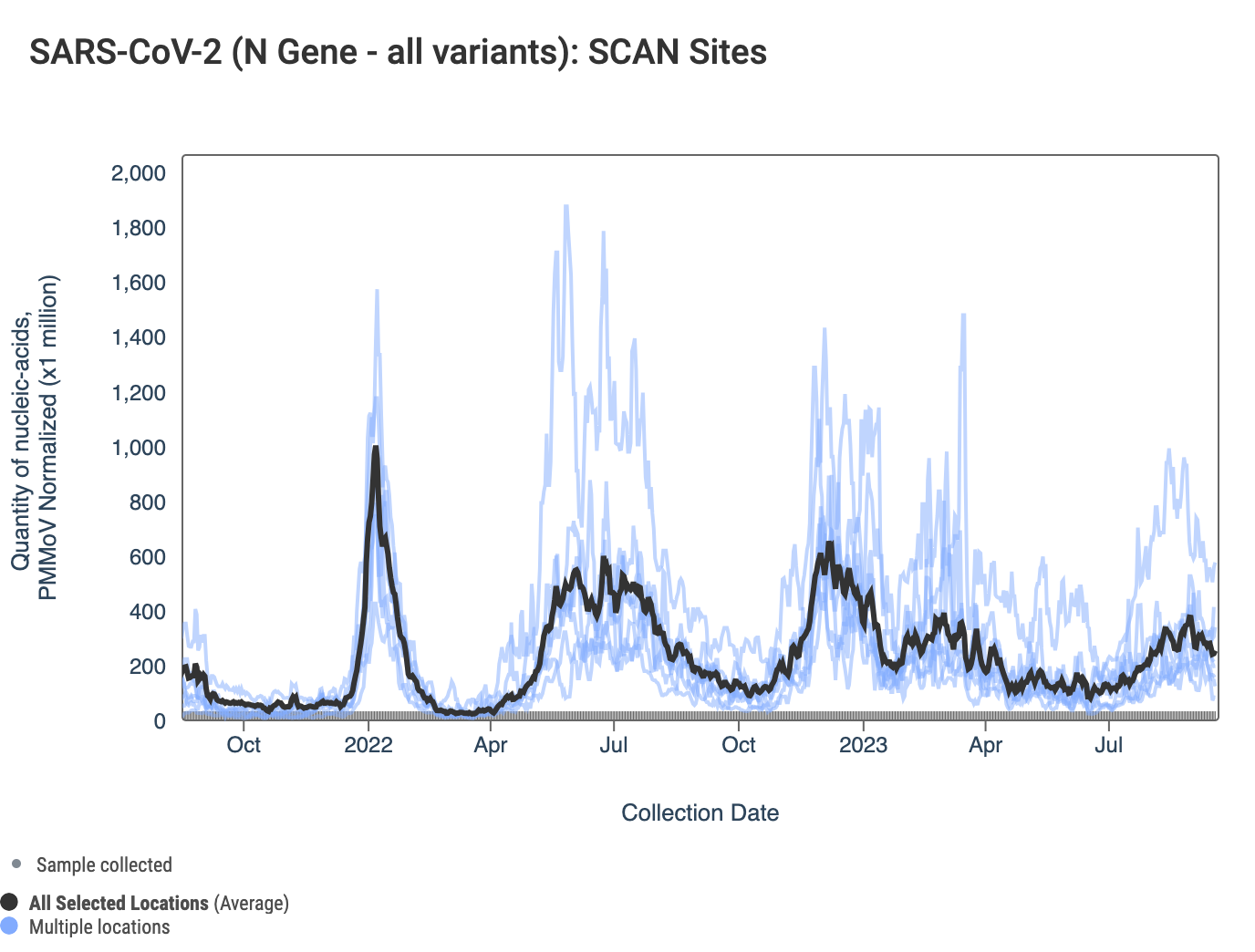
Below are the current SARS-CoV-2 wastewater categories for the SCAN sites:
- SVCW and Sunnyvale are in the LOW Wastewater Category (concentrations in lower tertile and no significant trends)
- Gilroy, Oceanside SF, Sacramento, San Jose and Southeast SF are in the MEDIUM Wastewater Category (concentrations in middle tertile and no significant trends)
- Palo Alto is in the HIGH Wastewater Category (concentrations in upper tertile and significantly upward trends)
The ratio of the XBB* mutations/N across SCAN plants is shown in the chart below. This chart comes from data.wastewaterscan.org (link here to the chart). As the ratio reaches 100%, it suggests that all the SARS-CoV-2 genomes in wastewater have the XBB* mutations. These data indicate that the regional average ratio XBB* mutations/N is ~50-90%. These data suggest that the majority of infections across the SCAN communities are caused by XBB*. Note that these set of mutations are also present in EG.5 sublineage, but they are not present in BA.2.86.
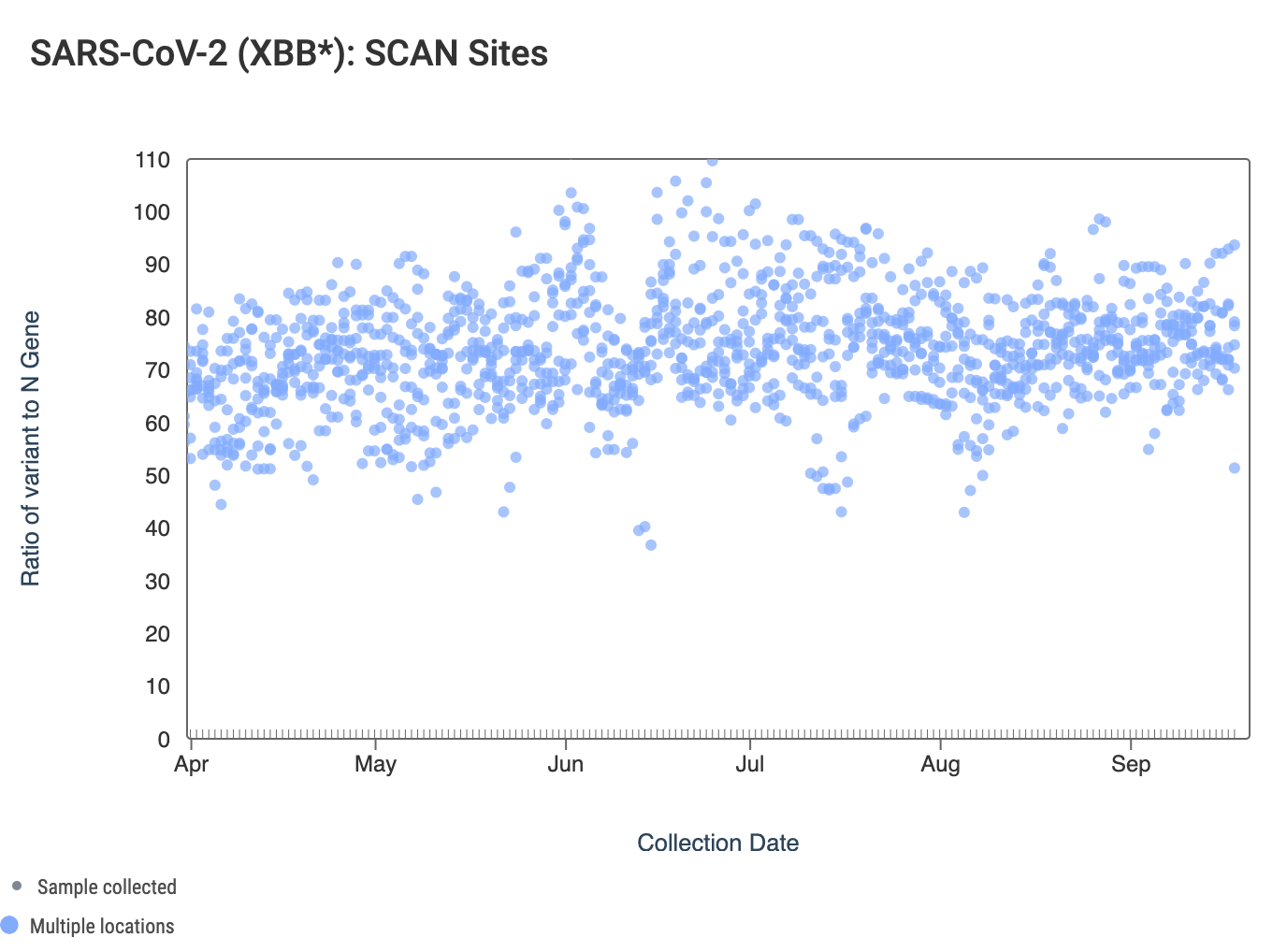
Below are plots from Oceanside, Sacramento, and San Jose showing the relative proportions of different variants inferred from sequencing the entire genome of SARS-CoV-2. Samples with low coverage are not being displayed in the plots (this explains some empty columns for Sacramento and San Jose). You can see that that all three plats had around 25-30% of the sublineage EG.5 (in orange) in the most recent sample. EG.5 is an Omicron sublineage that has emerged in other parts of the world and has been causing infections in the US. You can read more about it here. Note that the sequencing data are always from samples taken between 1- 2 weeks ago. We have not detected BA.2.86 in any samples yet, but it should be easy to detect when it is present because it has some characteristic deletions and a large insertion. BA.2.86 was detected in a wastewater sample somewhere, as describe in this press release from CDC.


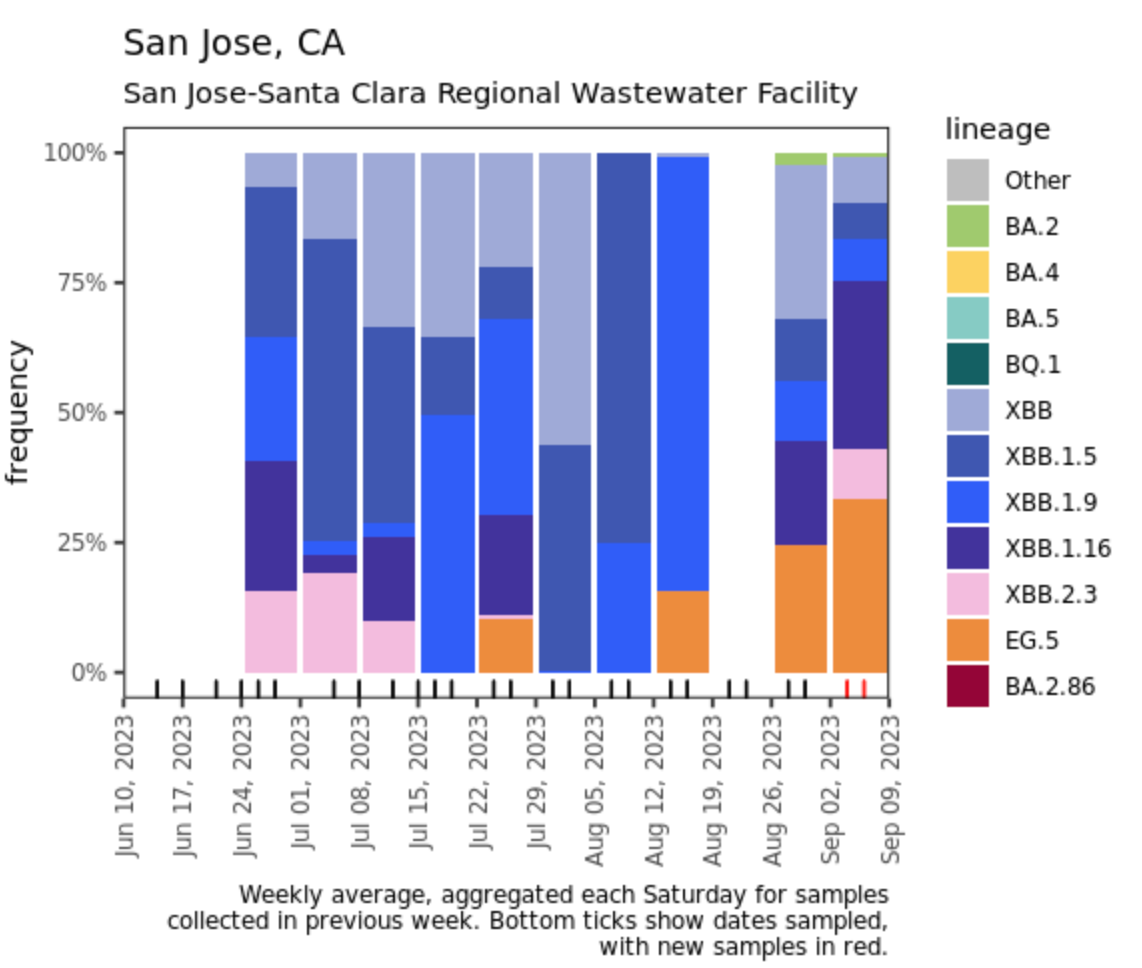
Other Respiratory Targets
Influenza A & B, RSV, and HMPV
Influenza A (IAV) RNA concentrations are on average higher than they were at this time last year. In the chart below, the population weighted average line across all the SCAN plants is shown in black, and you can see a recent small uptick. The link to the chart below is here if you would like to interact with it.

Despite seeing more consistent detections of IAV over the past couple of weeks, we have still not hit seasonal wastewater onset for all plants. As a reminder we are determining a wastewater onset events as the first day for which all samples in a 14 day look back period had concentrations higher than 2,000 copies/g, which is approximately twice the lowest detectable concentration.
- Gilroy, Oceanside SF, Sacramento, San Jose, SVCW, Southeast SF and Sunnyvale are in the LOW Wastewater Category (not in seasonal onset)
- Palo Alto is the only SCAN site to meet the threshold for IAV onset and in the HIGH Wastewater Category (concentrations in the upper tertile and significantly upward trends)
Below is a chart that highlights the centered, 5-d trimmed average IAV concentrations for Palo Alto (yellow) compared to the population weighted average across the SCAN plants (black).

Below is a chart showing the National Levels benchmarks superimposed on the IAV data from the SCAN sites since the beginning of 2023 (you can access this chart here).
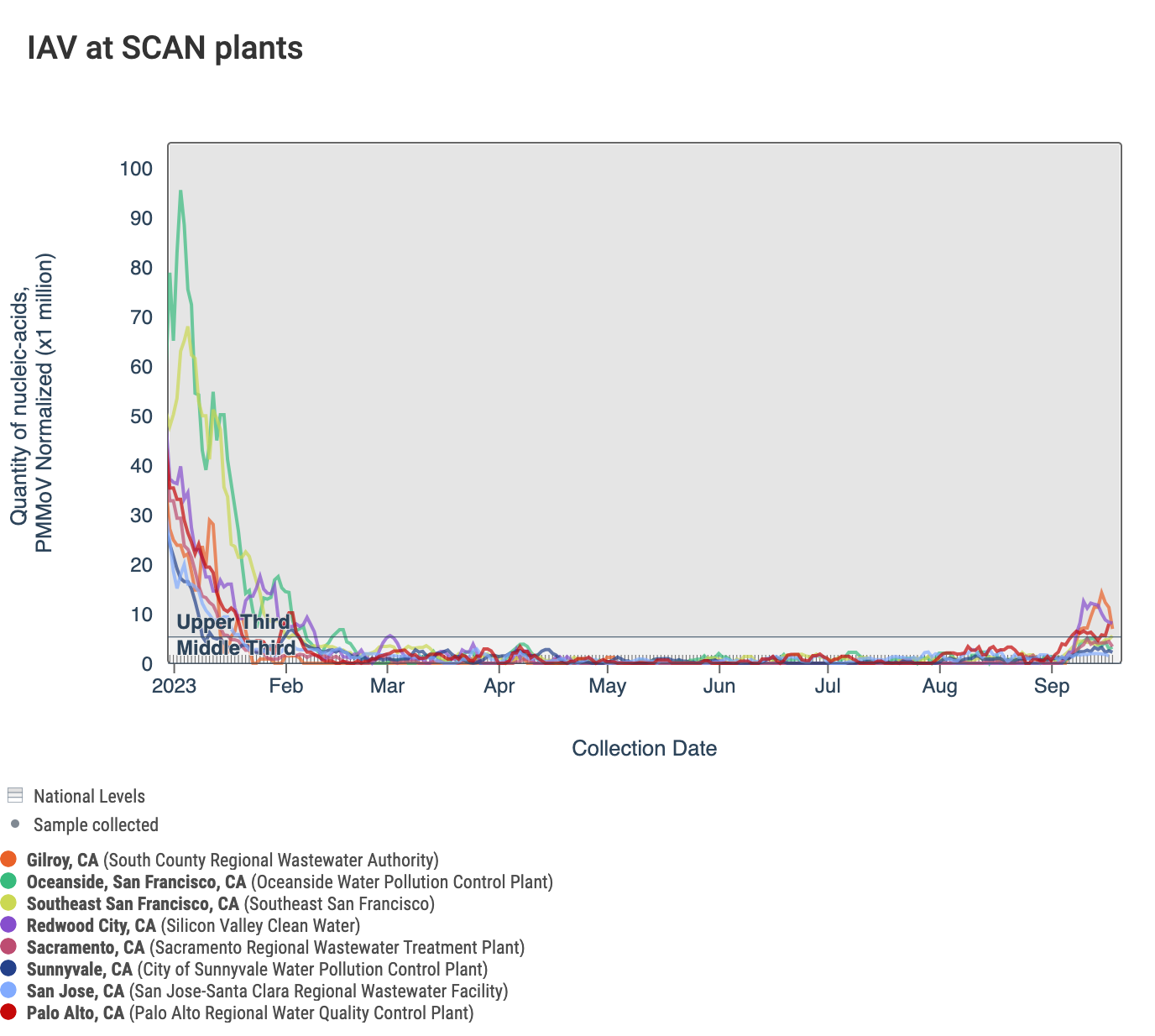
RSV RNA concentrations are shown below from all the SCAN sites in the chart below together since last winter and can be access here. The population weighted average line across all the SCAN plants is shown in black, and you can see a recent uptick.

Despite seeing more consistent detections of RSV over the past couple of weeks, we have still not hit seasonal wastewater onset. Currently all SCAN sites are in the 'LOW' Wastewater Category for RSV.
Below is a chart showing the National Levels benchmarks superimposed on the RSV data from the SCAN sites since the beginning of 2023 (you can access this chart here). Currently all SCAN sites RSV concentrations in the middle third level.

HMPV (human metapneumovirus) RNA concentrations are low at most of plants in SCAN. Below are charts showing data from all the SCAN plants together (link here to this chart if you want to interact with it).
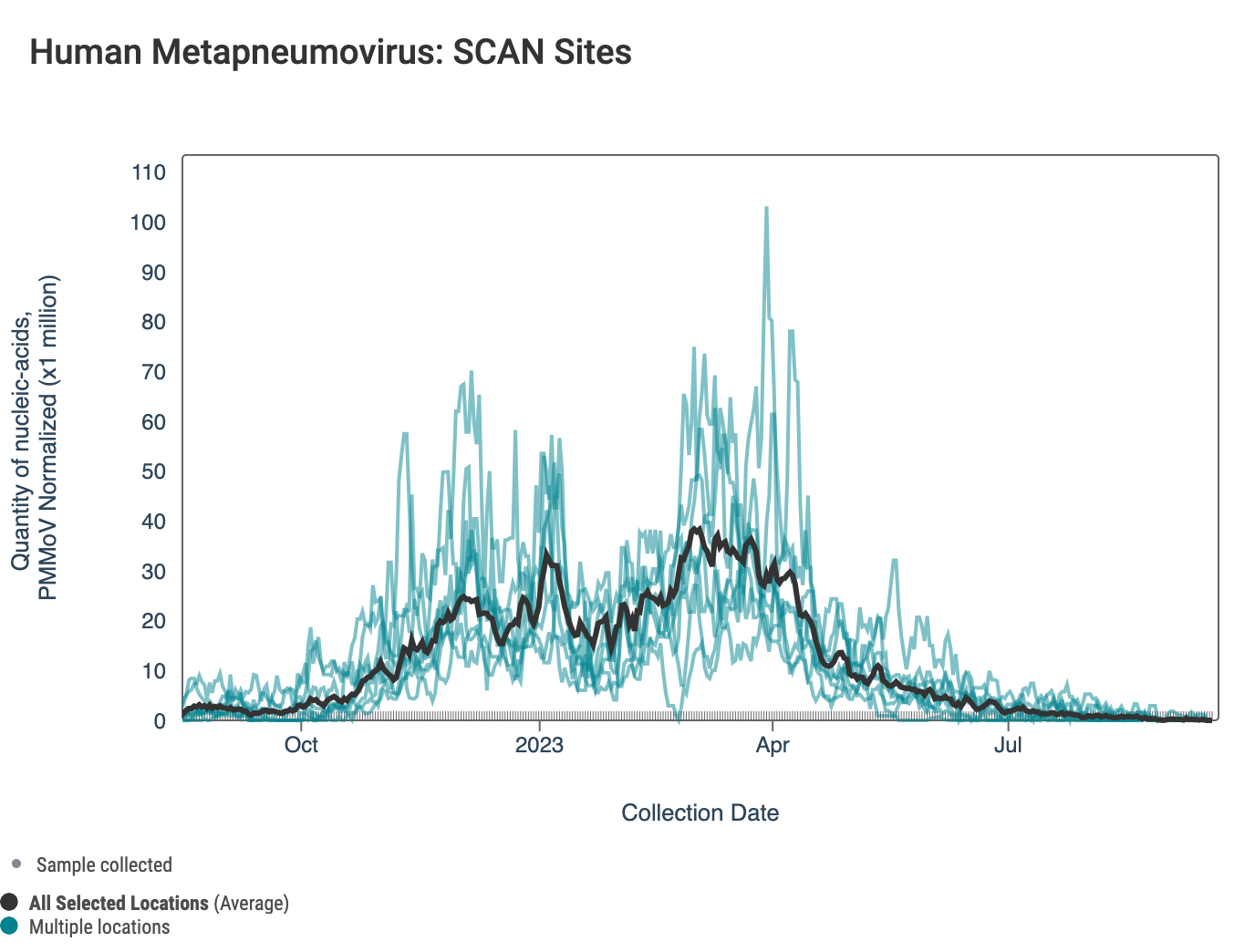
Despite seeing more consistent detections of HMPV over the past couple of weeks, we have still not hit seasonal wastewater onset. Currently all SCAN sites are in the 'LOW' category for HMPV.
Below is a chart showing the National Levels benchmarks superimposed on the HMPV data from the SCAN sites since the beginning of 2023. (You can access the chart here.) Currently all SCAN sites HMPV concentrations in the lower third level.
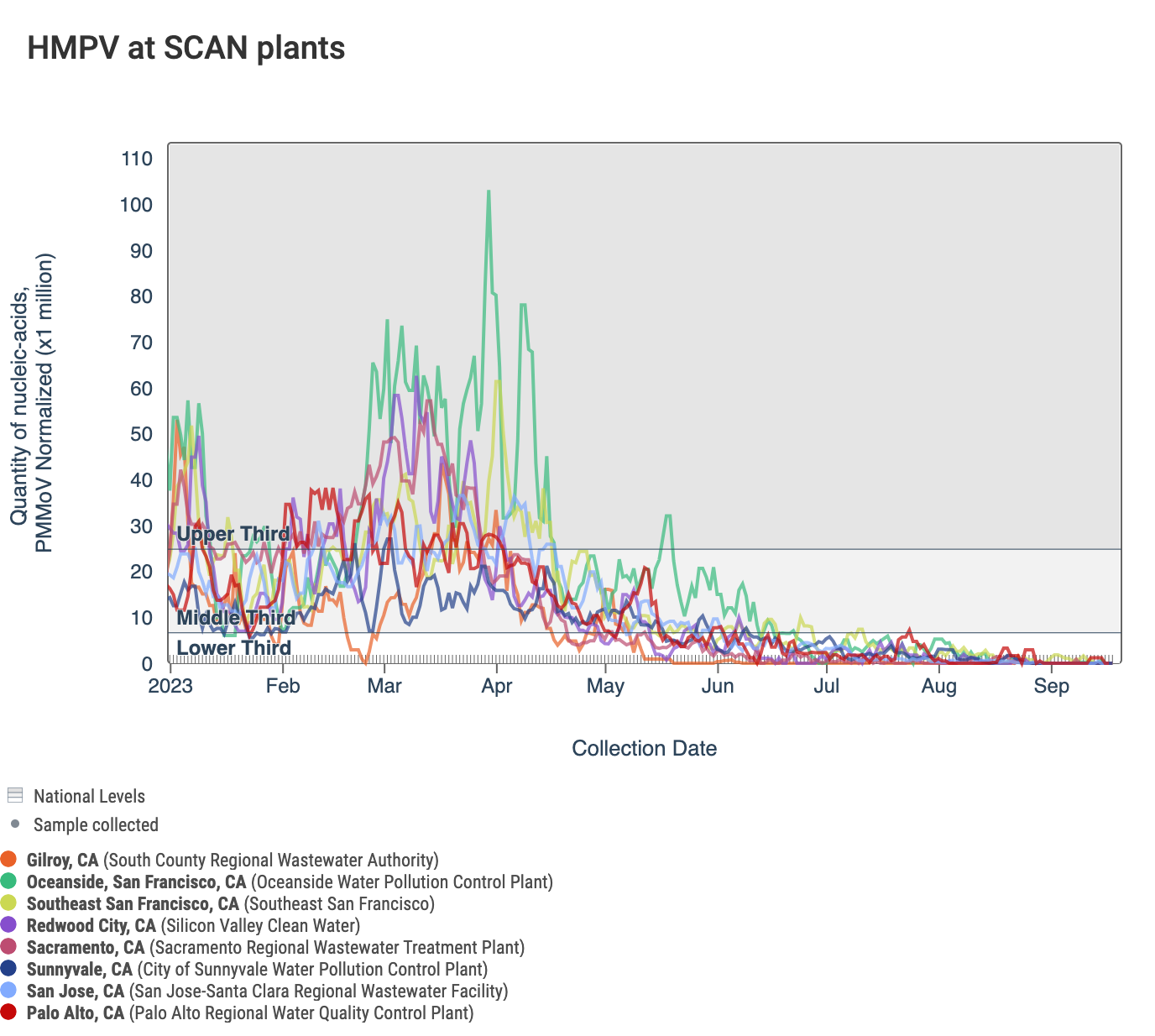
Gastrointestinal Targets
Norovirus GII
Norovirus GII RNA concentrations are shown in the chart below; all the SCAN plants are shown together. The population weighted average line is shown in black. You can interact with the chart of all the plants at this link.
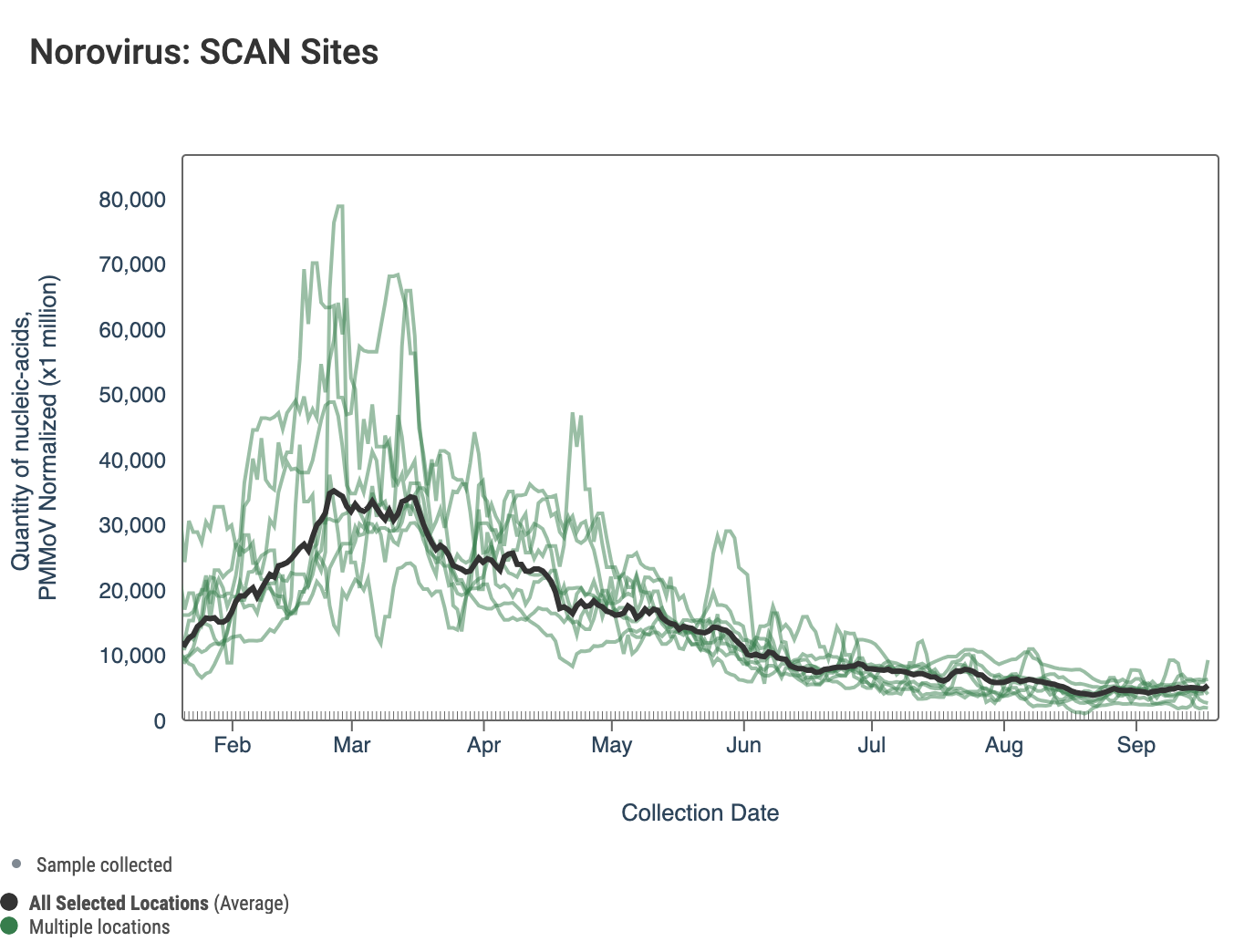
Below are the current Norovirus wastewater categories for the SCAN sites:
- Gilroy, Palo Alto, Oceanside SF, San Jose, SVCW, Southeast SF and Sunnyvale are in the LOW Wastewater Category
- Sacramento is the only SCAN site in the MEDIUM Wastewater Category (concentrations in the lower tertile and significantly upward trends)
Below is a chart that highlights the centered, 5-d trimmed average Norovirus GII concentrations for Sacramento (red) compared to the population weighted average across the SCAN plants (black).

Below is a chart showing the National Levels benchmarks superimposed on the HuNoV GII data from the SCAN sites since the beginning of 2023. (You can access the chart here.) Currently all SCAN sites HuNoV GII concentrations in the lower third level.

Other Pathogens of Concern
Mpox
We've observed mostly non-detects in the last 21 days for MPXV DNA at the SCAN plants. Currently all SCAN sites are in the 'LOW' category for Mpox. The heat map show all the SCAN sites as a row, and each date as a column. The color blue means the sample was non-detect for MPXV DNA and the colors get darker with higher concentrations. White indicates no sample was collected. The charts shows all the data we have collected, almost a year's worth of data. You can access the chart here.
